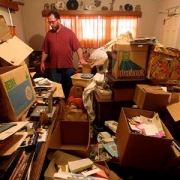Mold and Dust Mites are Great Friends
Most Americans spend 90% of their time indoors. Levels of pollutants may be 200% to 500% higher indoors than outdoors, even in cities with a lot of air pollution. The indoor air is full of harmful pollutants. Dust mites are one of the main culprits! They thrive on the gunk deep down in the carpet. They are invisible to the eye, but very apparent to the lungs.
Every time someone walks across the carpet, the pollutants are released into the air. It can stay airborne for an hour or more, so that the average home will always have these particulate in the air. This is especially harmful to those with allergies. This is why we believe carpet cleaning is foremost a health issue, secondarily an appearance issue.
Dampness, Mold, House Dust Mites and Allergy
Dampness favors proliferation of biological species and increased emission of chemical pollutants. Causes of dampness in a building may be complex. Possible causes may include:
- Penetrating damp due to defects in the roof, walls or plumbing
- Rising damp
- Condensation
- The activities of the building’s occupants such as cooking, dishwashing, and cleaning.
How Does Dampness Contribute to Mold and Dust Mites?
Increase in humidity in a building encourages proliferation of molds, bacteria, house dust mites, and other microorganisms, some of which are toxin producers or allergens. Dampness also results in increased emission of chemical pollutants from degrading building materials.
Mold spores are generally everywhere. Nutrients are available in the form of organic dust or cellulose found on most building surfaces. In most cases, the limiting factor to mold growth in a building is moisture. Molds have a minimum level of dampness (relative humidity) below which growth is limited. Generally relative humidity below 50% restricts mould growth.
Dampness is also essential for the survival of house dust mites. Since house dust mites do not drink free water they absorb it from the air and the environment. House dust mites feed on human skin scales (flakes), pollen, moulds, bacteria, animal dander, and skin scales of birds. These food sources have to be moist for mites to utilize them.
Therefore, the food consumption and populations of mites increase at high relative humidity. It has been estimated that human beings shed dead skin at a daily rate of 0.5-1.0g per person and several thousand mites can survive for months on just 0.25g, so moisture and not food would be the limiting factor to mite proliferation. House dust mites survive best at relative humidity of 70-85% and temperatures of 24-27 °C.
The Interaction Between Molds and Mites
Mites help in dispersal of bacteria, yeasts, molds and other saprophytic microorganisms. Their populations tend to flourish in the presence of molds since mites also feed on molds and the molds help to break down (pre-digest) and soften the skin scales.
For example, it has been suggested that the growth of the house dust mite in carpets, mattresses and dust may be stimulated by growth of drought-tolerant species of Aspergillus, such as Aspergillus glaucus on human skin scales and other dry household organic particulates.
However, with rising relative humidity, mold activity increases rapidly and above 85% relative humidity, mite populations decline as the food supply becomes contaminated by mold and other microbial metabolites.
Tips for Dealing with Dust Mites
Dust mite allergens can affect us all. They can be harmful to the young, old, infirm, and everyone in-between. Major universities, health organizations, and the EPA warn us against the harmful effects of exposure to dust mites, and their allergens. Dust mites have a significant role in many asthma cases, and are a factor in hay fever and various other allergic ailments. Most people in homes across America and the world share their environment with common house dust mites. They are microscopic Arachnids, and members of the same family as spiders and ticks.
Dust mites main diet consists of human skin that we all slough off naturally every day. Dust mites live in our carpets, clothes, furniture and bedding. Most homes have literally millions of these creatures, both alive and dead. So it’s not surprising that most household dust consists largely of human skin, living and dead dust mites, old dust mite skins, and dust mite feces. UGH!
What Can We Do About Dust Mites?
There are many steps we can all take to help eliminate dust mites, and make our homes healthier places to live.
- Clean your carpets with a natural anti-allergen, such as CitruSolution. It contains d-Limonene, a naturally occurring extract of citrus peels that has been proven to destroy dust mites and many other common allergens that cause respiratory distress.
- VACUUM, VACUUM, VACUUM. We can’t stress this enough. When you vacuum your carpets you remove live and dead dust mites, and also their source of nourishment: dead skin.
- Reduce the humidity in your home. Dust mites cannot drink, so they can only live in humidity higher than 50%, and they thrive in humidity over 70%.
- Clean your bed linens often – in hot water – at least once a week.
- Vacuum your kitchen and hard surface floors at least once a week.
Reducing the Risks
Reducing exposure to mold spores, mites and chemical pollutants reduces the risk of allergy and other respiratory problems. Since dampness encourages proliferation of molds and mites and increases emission of chemical pollutants, reducing dampness in buildings would reduce exposure to these pollutants. Dampness in buildings can be reduced by:
- Mechanical ventilation
- Vapor barriers
- Channelling ground water away from foundations
- Sealing below-ground walls
- Protecting ground-level concrete slabs from moisture intrusion
- Venting showers and other moisture-generating sources to the outside
- Using air conditioners and dehumidifiers.
- Using exhaust fans whenever cooking, dishwashing, and cleaning.

 Everyday Health.com
Everyday Health.com





